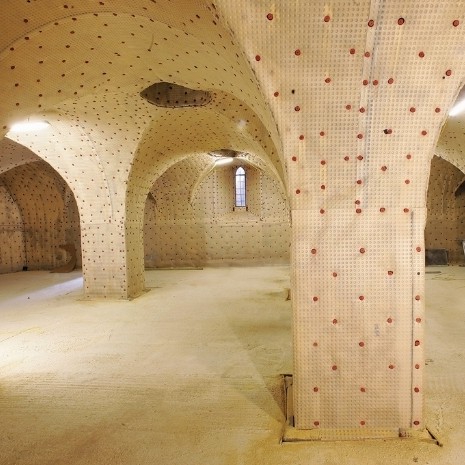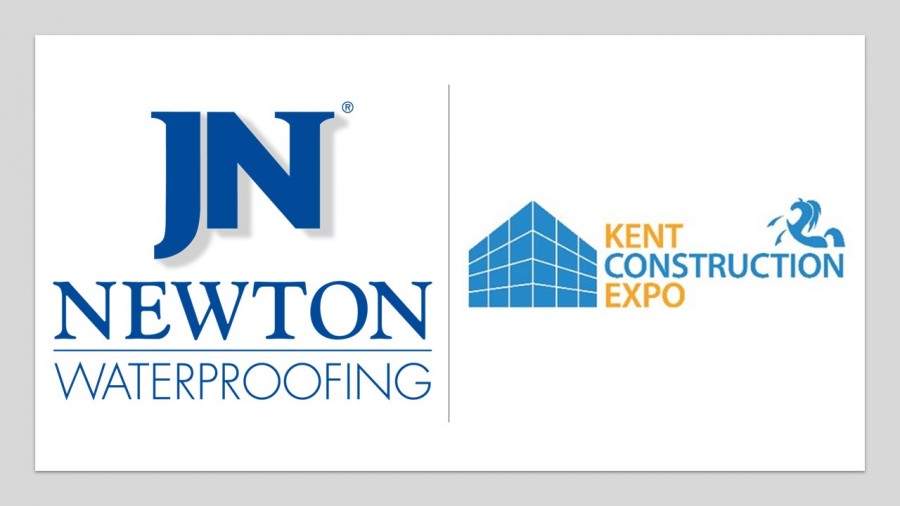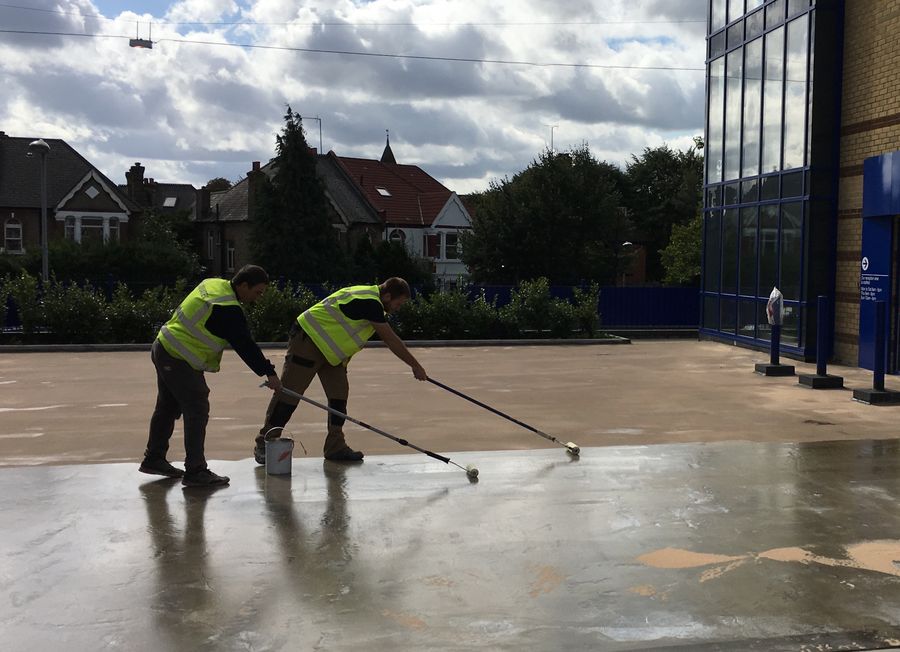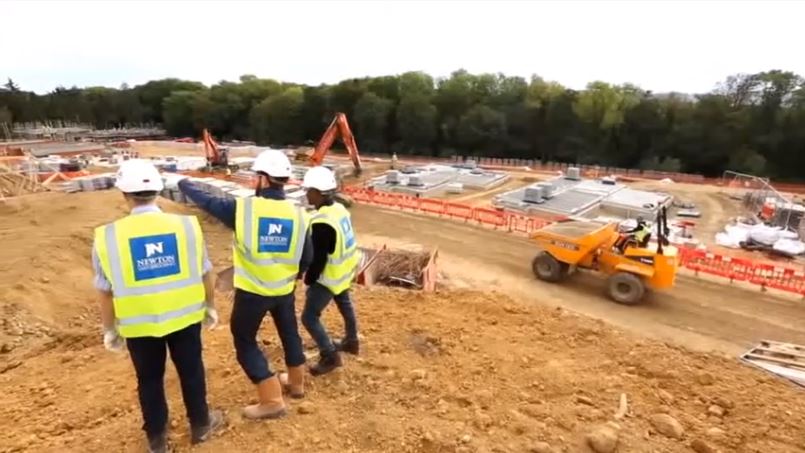
As historic and listed buildings do not benefit from modern methods of damp or waterproofing, they are often subject to rising and penetrating dampness and the residual dampness of general disrepair, resulting in serious detrimental effects on general living conditions and internal finishes.
When dealing with buildings of special architectural or historic interest, it is fundamentally important to maintain the structural and aesthetic integrity of the building and remain sympathetic to the structure in terms of any product application, whilst still achieving the desired effect.
Many damp-proofing products require exhaustive and potentially damaging surface preparation techniques which are likely to be unacceptable for listed buildings or in sensitive conservation areas. The intrusive preparation required will most certainly have a detrimental effect on the structure, which in most cases will be irreversible.
"There are products available which are ideal for treating damp in historic and listed buildings, as they meet stringent Listed Building Requirements," explains Toby Champion, of Newton Waterproofing Systems.
"For instance, many Newton damp-proofing products can be sympathetically applied with little or no preparation at all and depending on the chosen wall finish, often only require the very minimum of strategically placed fixings to hold the membrane in place. Once installed, the membrane achieves its design function by providing an impervious separation barrier between the damp surface and the new internal wall. Therefore, moisture and moisture vapour are prevented from affecting the internal finishes; when supplemented by drainage, this can become one of the most effective forms of waterproofing systems available.
"In many cases, historic brick built structures will already have been dry lined or had lime based finishes applied to mask or attempt to deal with unwelcome and unsightly staining or damp patches, visible salt deposits and exacerbated levels of internal atmospheric moisture caused by the dampness, all of which lead to continual maintenance and upkeep of the decorative wall finishes. Some wall structures such as cob or chalk actually require a relatively high level of moisture to be present in order to maintain their structural integrity. However, this can result in the detrimental effects described above. With this type of structure, there is a prerequisite to remain reasonably damp to retain structural integrity.
"Many walls in historic buildings are actually constructed of fairly random materials which could not be expected to accept or sustain modern injected chemical damp-proof courses (DPC’s). Many walls of this nature are too thick and sparsely populated by physical mass to receive modern chemical DPC’s and the fluid or cream injected does not achieve even distribution through the substrate. In any case, even a very well installed chemical DPC should only ever be seen as a damp inhibitor and not the sole solution to rising damp.
"As a result of the difficulties of introducing a chemical DPC into random or porous substrates to prevent rising dampness, many building owners and managers of historic buildings are simply resigned to the fact that their walls will be damp to some degree.
"If completely dry and untainted internal wall finishes are required, Newton Waterproofing Systems has a number of products that are ideal for providing an impervious barrier between the damp construction and the new internal finish. The air gap created by the studs of the membrane provides an equilibrium of moisture laden air which maintains the natural state of the structure, helping to prolong its longevity whilst protecting the wall internal finishes from the damaging effects of dampness. Installation of internally applied Newton damp-proofing membranes should be to about 200mm above the highest evidence of rising dampness so as to allow the property to 'breathe' by allowing vapour drive to continue unimpeded through the walls above the treatment.
Damp-Proofing Above Ground Wall - Penetrating Damp
"Penetrating dampness should be treated at source, externally where the water is coming through the wall. The two most likely reasons will be wind driven rain or defective rainwater goods. Water in its liquid state can only pass through the wall if there are defects large enough for the water to pass through. These defects, usually failed pointing, should be repaired so that the wall is resistant to the passage of liquid water.
"Solid walls of old buildings were designed to be dampened by wind driven rain with the expectation they would dry outwards after the rain event before the moisture moved by capillary to the internal wall surface. Sometimes there is just too much rain and the moisture pass to the internal wall finishes shows as penetrating dampness. Newton 807 BKK eco is an externally applied clear wall coating that penetrates into the wall materials, blocking the complex capillary network and so preventing moisture from entering the wall. BKK eco is extremely breathable and so both residual moisture and internally derived humidity are able to pass out from the wall by the process of vapour drive. Not only are the internal wall finishes free from damp, but a dry wall is a warmer wall and so the probability of internal condensation occurring is reduced dramatically."
Subterranean areas will always be subject to penetrating dampness due to the earth which bears against the structures. Water courses within permeable soils can act like pipes, bring water to the structure, and soils that become saturated develop heads of hydrostatic water pressure that surround the subterranean structure leading to water ingress through gaps and joints within the building fabric, usually at the joint between the wall and the floor. To create habitable or useable areas the structure needs to be waterproofed.
From a historic and listed buildings perspective, Newton System 500 Cavity Drain Waterproofing products are ideally suited for below ground areas. When they are installed properly by Newton Specialist Basement Contractors (NSBC), they depressurise and collect water that enters the structure, removing water via gravity, if on a sloping site, or otherwise by a pumping system.
The internal finishes are isolated from the damp/water by membranes to the floor and walls leaving a dry and habitable space for the occupier, in the most demanding of situations and the most historic of structures.
When selecting products, it is important to specify waterproofing and damp-proofing systems which have a track record of use in listed or historic projects. Newton Waterproofing Systems have been used to waterproof many Grade 1, 2 and 3 listed structures and other historic buildings such as Windsor Palace, the British Museum, the Houses of Parliament, the Royal Courts of Justice, Ixworth Abbey and St George’s Hall, Liverpool.













